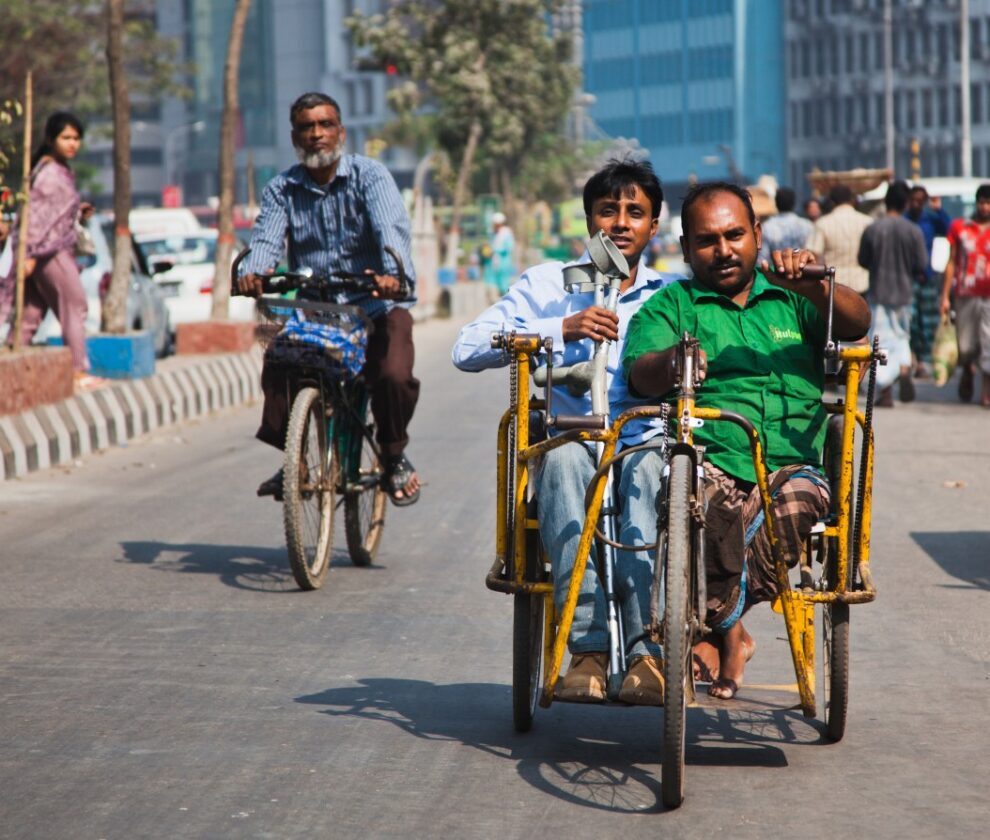Bangladesh ranked 72nd in the recent Green Future Index (GFI) 2023, marking a challenging position for the nation among the 76 economies evaluated. This ranking reflects a significant concern, especially considering that Bangladesh has slid down ten notches from its 2022 ranking, the most substantial decline among its Asian peers.
The Green Future Index (GFI) 2023, MIT Technology Review’s third annual ranking, assesses 76 nations and territories based on their capacity to create sustainable, low-carbon futures for their societies and economies. Notably, this year’s index highlights the increasing alignment of economic and social development with decarbonization goals. However, this progress faces challenges due to global disparities in wealth, technology access, and expertise
The performance indicators are based on 5 Pillars including
Carbon Emissions: Measures a country’s success in reducing carbon emissions relative to its GDP and tracks changes in emissions in various sectors. The report categorizes 16 countries, Bangladesh among them, as “Climate Abstainers.” These nations are at risk of lagging behind in the pursuit of a modern, clean, and innovative economy due to their limited progress and commitment to sustainability.
Energy Transition: Assesses a country’s shift toward cleaner energy sources, including renewables and nuclear power, as a percentage of total energy consumption. Asia leads in new renewable energy capacity with 60% of new installations and nearly half of global clean energy production however Bangladesh scored lower than previous year in this category as well.
Green Society: Evaluates efforts to promote sustainability through indicators such as green buildings, recycling rates, forestation changes, and electric vehicle adoption. China and India are leading Asia with the world’s largest number of LEED-certified projects, covering 16 million and 10.4 million square meters of built space, respectively. Bangladesh has also emerged as a significant player, hosting half of the world’s top 100 LEED-certified green industrial units, thanks to local entrepreneurs’ investments in eco-friendly manufacturing facilities.
Clean Innovation: Measures a country’s innovation in sustainable technology through patents, investments in clean energy, and the presence of food tech startups.
Climate Policy: Assesses the effectiveness of climate policies, including alignment with global climate goals, regulatory frameworks, financial incentives, and the impact of COVID-19 recovery efforts on decarbonization. Bangladesh’s performance is positive in this parameter as Bangladesh was the first nation to implement a plastic bag ban, more than two decades ago, yet Bangladesh requires proper policy making in terms of green businesses and the green economy concept
Which global economies and policies can serve as guiding examples for Bangladesh to ensure a Green Future?
Emulating Ghana’s Green Successful Strategy : A Blueprint for Bangladesh
Ghana’s impressive climb in the Green Future Index 2023, where it advanced seven places to the 65th position, is attributed to its resolute commitment to reforest 2 million hectares by 2030. This commitment stands out as a shining example of progress, with 628,000 hectares already rejuvenated, largely within agricultural landscapes, fostering biodiversity and ecological balance. Ghana’s proactive approach in international collaborations, such as implementing low-methane rice production techniques through its partnership with Switzerland, demonstrates its dedication to environmentally responsible practices. Despite inherent challenges, notably in resource-intensive relationships with China, Ghana’s green strides offer valuable inspiration to countries grappling with similar issues.
In the context of Bangladesh, Ghana’s green success story provides a pertinent model. Bangladesh, a nation confronted by the pressing concerns of climate change and economic development, can derive critical lessons from Ghana’s approach. Bangladesh’s susceptibility to climate impacts, including rising threats on coastal communities livelihood & employment due to extreme weather events, necessitates a dedicated commitment to reforestation and the promotion of sustainable agriculture. By embracing Ghana’s dedication to mitigating deforestation and enhancing agricultural productivity while nurturing biodiversity, Bangladesh can fortify its climate resilience. International partnerships, akin to Ghana’s collaboration with Switzerland, can provide the necessary support for green initiatives. To address resource-intensive challenges, such as those posed by Bangladesh’s relationships with its partners, adopting Ghana’s comprehensive green agenda could help steer Bangladesh towards a more sustainable and environmentally responsible future, concurrently addressing both its climate adaptation and economic imperatives.
Netherlands’ Urchinomics: Transforming Sea Urchins into Kelp Forests
Netherlands-based startup Urchinomics has embarked on an innovative mission to combat marine deserts caused by sea urchin overpopulation. By converting sea urchin barrens into thriving kelp forests, they’ve found a unique approach to carbon sequestration and marine ecosystem restoration. The company’s CEO and founder, Brian Tsuyoshi Takeda, has cleverly harnessed the economic potential of sea urchin production, as these premium-priced proteins have high demand in sushi restaurants. This strategic approach not only drives revenue but also contributes to environmental restoration efforts, making Urchinomics a remarkable example of sustainability through high-end market economics.
How Can Bangladesh’s Blue Economy Emerge as an Economic Powerhouse, Following in the Footsteps of the Netherlands?
In the context of Bangladesh, Netherlands’ Urchinomics’ innovative approach presents an inspiring model for developing the country’s blue economy. Bangladesh, endowed with an extensive coastline of over 700 kilometers and approximately 25,000 square kilometers of coastal area, Bangladesh has significant potential for seaweed cultivation, currently yielding around 400 tonnes per year in regions like Cox’s Bazar, Chattogram, and others. Research suggests that a substantial portion of the country’s coastal waters is suitable for seaweed production, offering opportunities to create jobs and bolster the blue economy. By drawing inspiration from the Netherlands’ innovative approach to marine ecosystem restoration, Bangladesh can tap into this growing global market, fostering both sustainability and economic growth along its coastline.
High Seas Treaty: A Global Conservation Milestone
The United Nations achieved a historic milestone in March 2023 with the finalization of the High Seas Treaty, a vital step in preserving natural marine environments that encompass two-thirds of the world’s oceans beyond national boundaries. This transformative treaty addresses funding, fishing rights, and the sustainable management of marine resources. It regulates fishing, manages marine traffic, and oversees marine exploration and mining activities in seabed regions deeper than 200 meters. Additionally, it establishes principles for the equitable sharing of marine genetic resources used in various industries. The treaty is indispensable for global marine biodiversity conservation and mitigating the impacts of climate change, pollution, and overfishing on the high seas.
Implementing the High Seas Treaty for Sustainable Coastal Communities in Bangladesh
In Bangladesh, characterized by its extensive coastline along the Bay of Bengal, the High Seas Treaty presents a unique opportunity to address specific challenges. Bangladesh faces the consequences of climate change, ocean pollution, and Overfishing off the coast of Bangladesh is creating a “fishless’ ‘ zone in one of the world’s largest marine ecosystems, which affect both the livelihoods of coastal communities & the biodiversity ecosystem. By actively participating in and ratifying the treaty, Bangladesh can contribute to sustainability within its coastal areas. Through the treaty’s provisions and regulations, Bangladesh can promote responsible fishing practices, safeguard marine ecosystems and biodiversity, and exercise control over activities in the Bay of Bengal. This proactive stance aligns with Bangladesh’s commitment to climate resilience, conservation, and the well-being of its coastal communities, ensuring a prosperous and sustainable coastal future that addresses the nation’s unique needs and challenges.
In Bangladesh’s pursuit of a green and sustainable future, valuable lessons can be drawn from global examples of environmental stewardship and innovative economic models. Ghana’s dedication to reforestation and sustainable agriculture, the Netherlands’ approach to marine ecosystem restoration, and the High Seas Treaty all offer inspiring blueprints. Implementing these strategies tailored to Bangladesh’s context can fortify its efforts to address climate change, protect marine ecosystems, and ensure the prosperity of its coastal communities.




